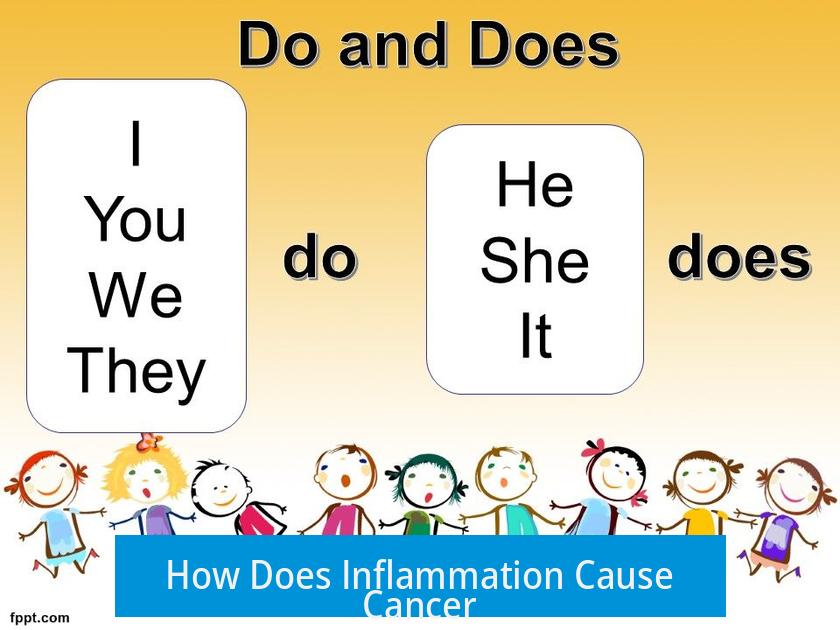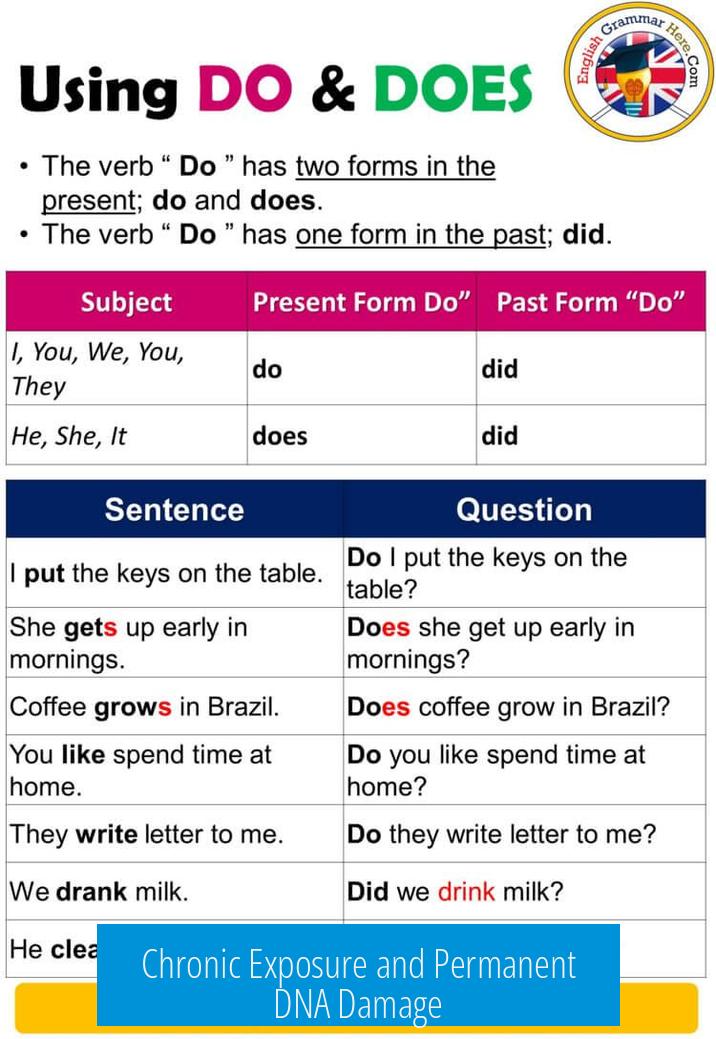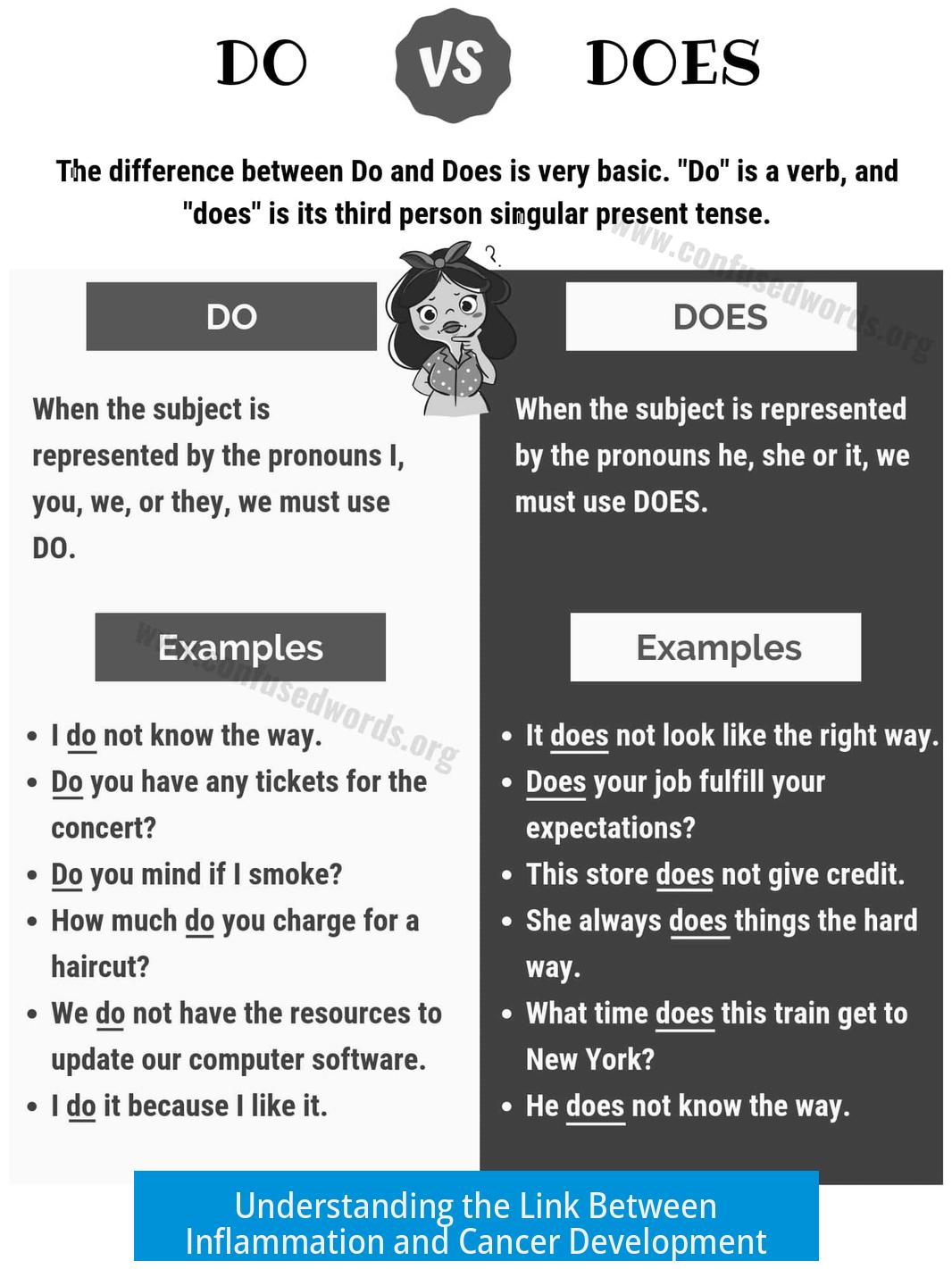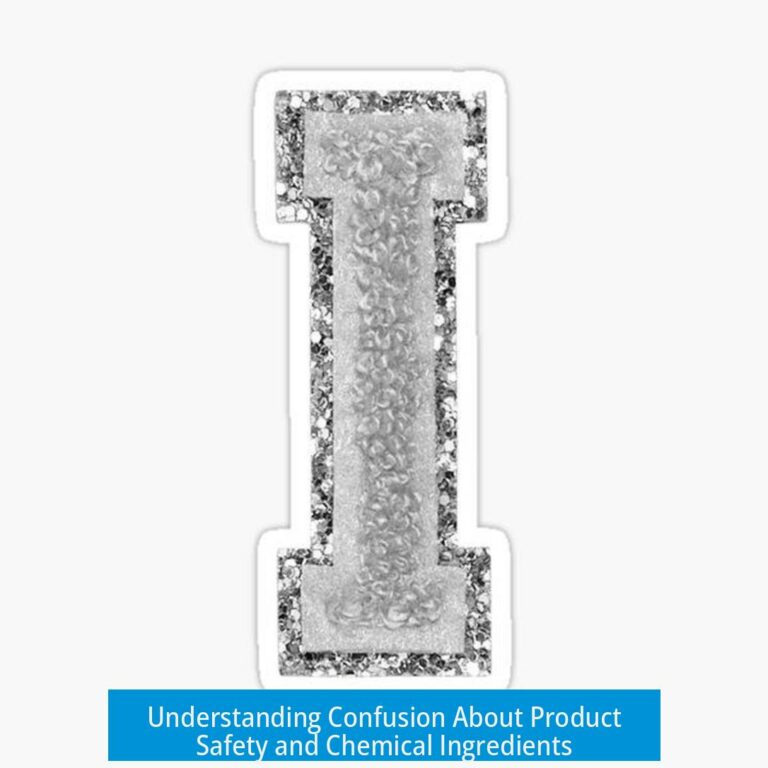How Does Inflammation Cause Cancer?

Inflammation contributes to cancer primarily through chronic exposure to reactive oxygen and nitrogen species (RONS), which cause DNA damage, and by inducing molecular changes such as altered micro-RNA expression and epigenetic modifications. This damage accumulates over time, increasing the risk of carcinogenesis.
Role of Chronic Inflammation and Infections
Infections can trigger persistent inflammation. Such chronic inflammation acts as a sustained stimulus in tissues. This ongoing immune response creates an environment that favors cancer development. The body’s defense mechanisms become a double-edged sword.
Inflammation is designed to detect and eliminate threats like pathogens. However, prolonged activation leads to cellular stress and damage. This situation increases the risk of genetic mutations.
Induction of Reactive Oxygen and Nitrogen Species (RONS)
- Inflammatory cells generate RONS during the immune response.
- These highly reactive molecules can attack cellular components.
- RONS predominantly cause DNA strand breaks and base modifications.
DNA damage from RONS is critical because it may result in permanent mutations if repair mechanisms fail. Continuous RONS exposure magnifies this risk.
Chronic Exposure and Permanent DNA Damage

As inflammation persists, cells undergo repeated assaults by RONS. The accumulation of genetic damage can disrupt normal cellular functions.
Mutations in key genes control cell growth and death, potentially leading to uncontrolled proliferation—a hallmark of cancer.
Additional Molecular Changes From Inflammation
- Micro-RNA expression: Inflammation can alter these small RNA molecules. They regulate gene expression related to cell cycle and apoptosis.
- Epigenetic modifications: Inflammatory signals may modify DNA methylation and histone acetylation patterns. Such changes influence gene activity without altering DNA sequence.
These molecular changes further disrupt cellular homeostasis and facilitate transformation to cancerous states.
Understanding Inflammation’s Dual Role
Inflammation balances repair and destruction. It removes damaged cells and pathogens but also risks harming healthy tissue. When prolonged, this process generates a microenvironment prone to tumor development.
Key Points to Remember

- Chronic inflammation produces RONS that damage DNA.
- Repeated insults increase likelihood of permanent mutations.
- Molecular mechanisms like micro-RNA and epigenetic changes contribute to carcinogenesis.
- Inflammation acts as both defender and potential promoter of cancer.
For deeper insight, refer to detailed reviews such as this NIH article and the classic Cell review.
How Does Inflammation Cause Cancer?
Inflammation causes cancer mainly by inducing DNA damage through reactive oxygen and nitrogen species (RONS), leading to permanent genetic and molecular changes that promote carcinogenesis. But that’s just the surface. Let’s dig deeper and uncover the fascinating—and yes, a bit sneaky—relationship between inflammation and cancer.
Imagine inflammation as a double agent. It’s supposed to protect your body, but sometimes, it turns against you. It repairs, fights danger, yet leaves a trail of damage behind. This paradox lies at the heart of how inflammation can cause cancer.
The Role of Infections and Chronic Inflammation in Carcinogenesis
Infections spark inflammation—that much we know. Some viruses directly trigger cancer. But beyond viruses, chronic inflammation itself is a significant player in cancer development.
Why? Because prolonged inflammation isn’t just a noisy alarm; it’s a sustained storm inside your body. The longer this storm rages, the more damage it inflicts on cells. This chronic state creates an environment ripe for cancer to take root.
Reactive Oxygen and Nitrogen Species (RONS): The Culprits Behind DNA Damage

Your body, when inflamed, churns out molecules called reactive oxygen and nitrogen species. Think of RONS as tiny, hyperactive vandals that attack your DNA. They aren’t just irritating—they cause real harm by inducing breaks, mutations, and errors in the genetic material.
This bombardment happens every time your immune system responds to injury or infection. When short-lived, it’s manageable. But when persistent, RONS produce cumulative DNA damage.
Chronic Exposure and Permanent DNA Damage: Cancer’s Root Cause
It’s all about repetition. Cells exposed repeatedly to RONS and inflammation don’t get a break. This chronic exposure escalates DNA damage into permanent mutations. Over time, these mutations accumulate in crucial genes that control cell growth and death.
Here’s the catch: such mutations can disable the usual checks and balances in cells. This unchecked growth is the hallmark of cancer. So, chronic inflammation effectively sets the genetic stage for cancerous transformations.
More Than DNA: Molecular Changes that Inflammation Wreaks
But wait, there’s more. Inflammation doesn’t just damage DNA. It alters the way genes talk to each other by changing micro-RNA expression. These tiny molecules regulate gene activity. When inflammation messes with micro-RNAs, it disrupts vital cellular functions.
Additionally, inflammation sparks epigenetic changes—chemical modifications that switch genes on or off without changing the DNA sequence. These changes can silence tumor suppressor genes or activate cancer-promoting genes.
Inflammation: Half Repair, Half Destroy

Think of inflammation as a double-edged sword. On one edge, it repairs tissue and fights off threats. On the other, it damages cells in the process. This cost-benefit balance works well in the short term.
But when inflammation becomes chronic, the repair mechanisms themselves might cause more harm than good. Prolonged inflammation exhausts the system, leading to DNA damage, altered gene expression, and a higher cancer risk.
Are you wondering whether you can control this inflammatory double agent? While you can’t completely eliminate inflammation—after all, it’s vital—targeting chronic inflammation could curb its cancer-promoting effects. Lifestyle changes like diet, exercise, and avoiding infections help keep inflammation in check.
What Does Science Say?
Leading experts highlight inflammation’s complex role. According to a prominent review, inflammation is not a mere bystander but a causal contributor to cancer initiation and progression. The interplay between immunity, RONS, DNA damage, and epigenetics forms a tangled web that fuels carcinogenesis.
Another outstanding article calls this relationship a fundamental insight into cancer biology. It emphasizes the need to consider inflammation as an essential factor in cancer prevention and treatment strategies.
Practical Tips to Manage Inflammation and Lower Cancer Risk
- Stay Active: Regular exercise moderates inflammation levels.
- Eat Anti-Inflammatory Foods: Think berries, fatty fish, and leafy greens.
- Avoid Chronic Infections: Vaccinations and prompt treatment matter.
- Limit Tobacco and Excessive Alcohol: Both fuel chronic inflammation.
- Manage Stress: Stress has a sneaky way of ramping up inflammation.
Managing inflammation is not just about feeling good—it’s an investment in your long-term health and cancer prevention.
Closing Thoughts
Inflammation triggers a cascade of molecular events that potentially lead to cancer. From the immediate DNA damage by RONS to broader changes in gene regulation, inflammation’s role is intricate but undeniable.
Seeing inflammation as a half-healer, half-harmer invites us to rethink our approach to health. Rather than eradicating it, we aim to balance it—support the healing, curb the damage.
So next time you think about inflammation, remember: it’s a complex character in your body’s story, and understanding its role could be key to outsmarting cancer.
For those who crave more science, these reviews offer a treasure trove of insights: Inflammation and Cancer: A Review Classic Cancer and Inflammation Article
What role do infections and chronic inflammation play in causing cancer?
Infections and ongoing inflammation both contribute to cancer development. Chronic inflammation creates an environment that can damage cells and DNA, increasing cancer risk over time.
How do reactive oxygen and nitrogen species (RONS) link inflammation to cancer?
During inflammation, RONS are produced in large amounts. These molecules damage DNA, which can lead to mutations and increase the chance of cancer formation.
Why does chronic inflammation increase the risk of permanent DNA damage?
Repeated exposure to inflammatory molecules causes persistent DNA damage. Over time, this damage accumulates, making cells more likely to become cancerous.
Besides DNA damage, what other cellular changes caused by inflammation promote cancer?
Inflammation alters micro-RNA expression and epigenetic patterns in cells. These changes affect gene regulation and can support cancer development.
How does the dual nature of inflammation contribute to cancer?
Inflammation aims to repair and defend the body but can also harm cells. Prolonged inflammation may result in damage that encourages cancer growth.




Leave a Comment